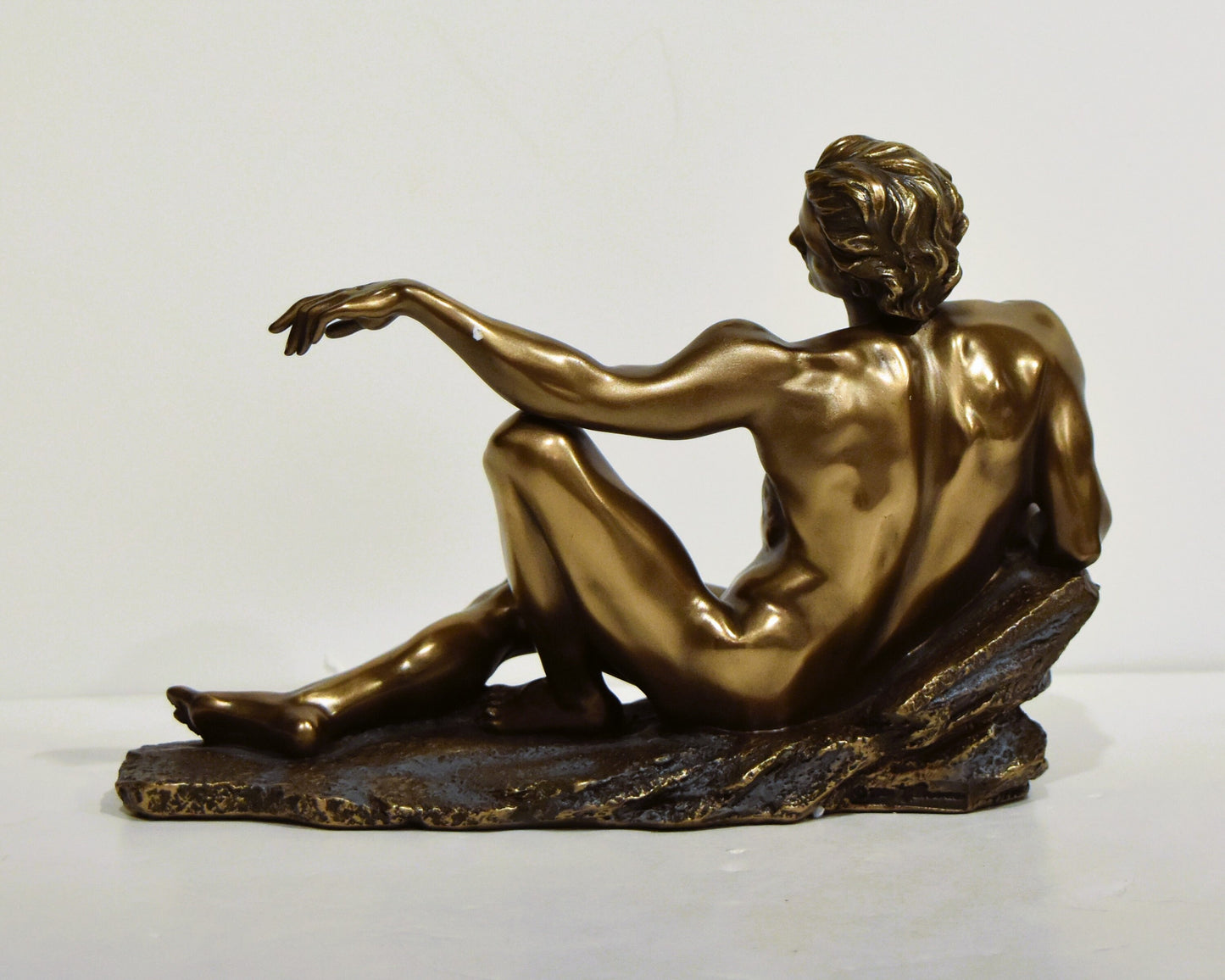Gallery Demeter
The Creation of Adam - Set - Sistine Chapel's ceiling - 1508–1512 - Michelangelo - Book of Genesis - Reproduction - Cold Cast Bronze Resin
The Creation of Adam - Set - Sistine Chapel's ceiling - 1508–1512 - Michelangelo - Book of Genesis - Reproduction - Cold Cast Bronze Resin
Couldn't load pickup availability
Condition: New
Material: Cold Cast Bronze Resin
Adam :
Height: 13 cm - 5,1 inches
Width: 19 cm - 7,5 inches
Length: 7 cm - 2,8 inches
Weight: 680 g
God :
Height: 19,5 cm - 7,7 inches
Width: 27,5 cm - 10,8 inches
Length: 9,5 cm - 3,7 inches
Weight: 1650 g
The most famous section of the Sistine Chapel ceiling is Michelangelo’s Creation of Adam. This scene is located next to the Creation of Eve, which is the panel at the center of the room, and the Congregation of the Waters, which is closer to the altar.
The Creation of Adam differs from typical Creation scenes painted up until that time. Here, two figures dominate the scene: God on the right, and Adam on the left. God is shown inside a floating nebulous form made up of drapery and other figures. The form is supported on angels who fly without wings, but whose flight is made clear by the drapery which whips out from underneath them. God is depicted as an elderly, yet muscular, man with grey hair and a long beard which react to the forward movement of flight. This is a far cry from imperial images of God that had otherwise been created in the West dating back to the time of late antiquity. Rather than wearing royal garments and depicted as an all-powerful ruler, he wears only a light tunic which leaves much of his arms and legs exposed. One might say this is a much more intimate portrait of God because he is shown in a state that is not untouchable and remote from Man, but one which is accessible to him.
Unlike the figure of God, who is outstretched and aloft, Adam is depicted as a lounging figure who rather lackadaisically responds to God’s imminent touch. This touch will not only give life to Adam, but will give life to all mankind. It is, therefore, the birth of the human race. Adam’s body forms a concave shape which echoes the form of God’s body, which is in a convex posture inside the nebulous, floating form. This correspondence of one form to the other seems to underscore the larger idea of Man corresponding to God; that is, it seems to reflect the idea that Man has been created in the image and likeness of God – an idea with which Michelangelo had to have been familiar.
One of the questions that has been raised about this scene is the identity of the figures next to God. Given her privileged placement under the arm of God, the female figure is presumably an important one. Traditionally, she has been thought to be Eve, the future wife of Adam, who waits to the side until she is created out of Adam’s rib. More recently, however, a theory has been floated that this is actually the Virgin Mary, who takes this place of honor next to God and the child next to her, who would therefore be the Christ Child. This view is supported by the placement of God’s fingers on the child – the same fingers that the priest would use to raise the Eucharist during the Mass. Since Catholic theology holds that the Eucharist is the Body of Christ, this theological understanding would be embodied in this painting. If this latter interpretation is correct, the Creation of Adam would be intrinsically linked to the future coming of Christ, who comes to reconcile man after the sin of Adam.
GRI 145-72293Γ4 ΓENNHΣΗ ΑΔΑΜ ΣΕΤ - 65,50









